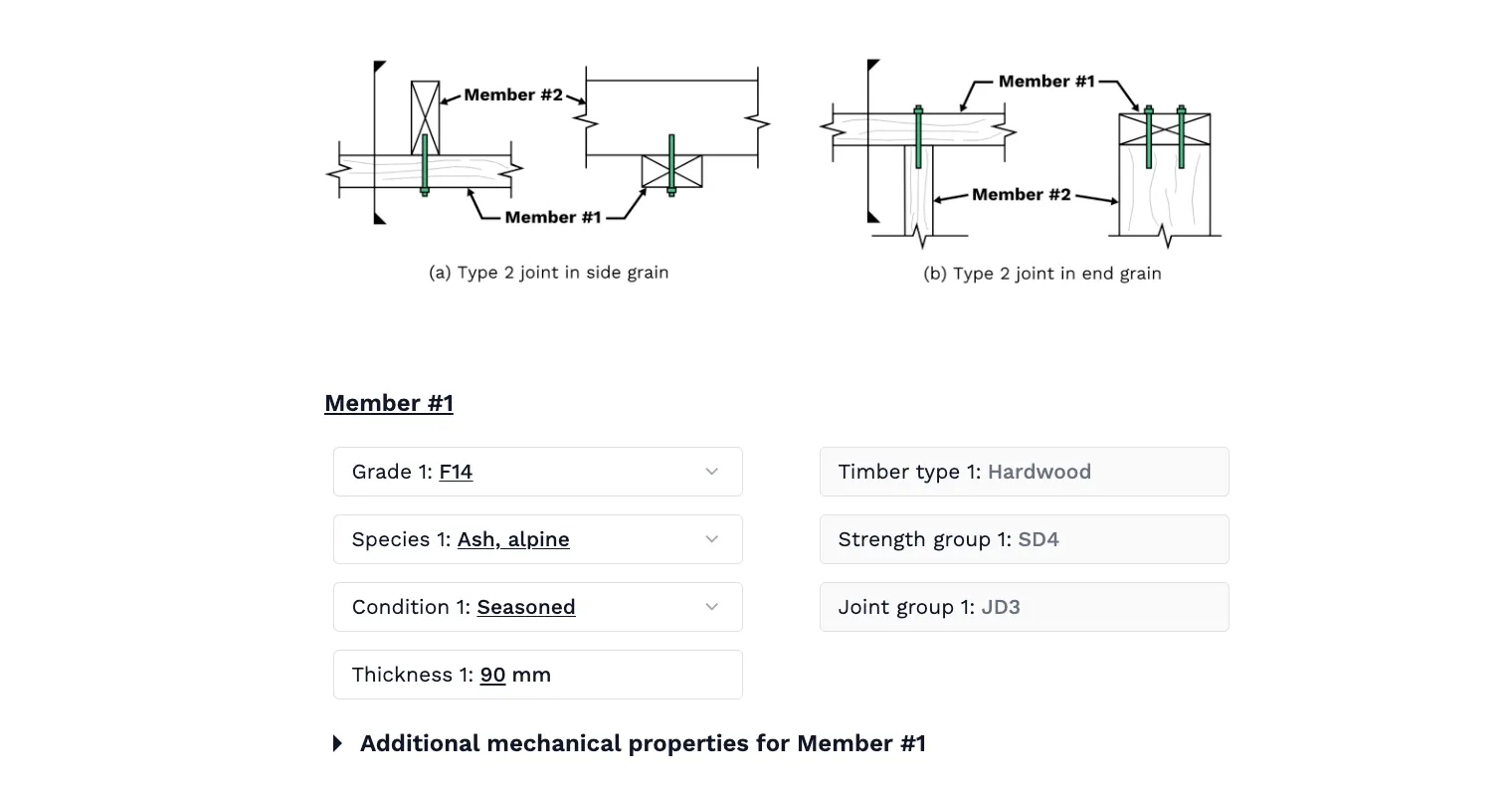Free Timber Screw Joint Design Tool to AS 1720.1-2010. Step-by-step, engineering-grade tool with downloadable report.

This template is not available yet. You can sign up and create it yourself!
Or let us know if you'd like to be notified when it’s ready:
Get started with your design
The Timber Screw Joint Designer to AS 1720.1-2010 is a specialized tool for designing timber screw joints. It evaluates timber species and screw group geometry to ensure the connection meets capacity requirements. The tool checks the strength of screw joints connecting two or three timber members under axial or shear forces, as well as moments, based on the Australian standard AS 1720.1-2010.
This tool is for:
- Structural engineers who need to design reliable timber screw connections for load-bearing structures.
- Timber construction specialists looking for efficient methods to validate screw joint performance in timber assemblies.
- Architectural designers who want to incorporate timber joints in their designs while ensuring compliance with Australian standards.
This parametric technical document is helpful because it automates the otherwise complex process of checking multiple load conditions and material properties, providing a reliable, quick way to validate timber screw connections. It reduces design time while ensuring all connections meet the safety standards outlined in AS 1720.1.
Engineering templates
Common calculators
Design guides
FAQs
What factors influence the capacity of timber screw joints?
The capacity of timber screw joints is influenced by the timber species, screw diameter, screw spacing, and the load direction relative to the grain of the wood.
Can screw joints be used for both axial and lateral loads in timber structures?
Yes, screw joints can be designed to resist both axial and lateral loads. However, the design must account for the interaction between these load types to ensure the connection's strength is sufficient.
What types of timber structures commonly use screw joints?
Screw joints are frequently used in prefabricated timber structures, residential buildings, and timber frames, where reliable, load-bearing connections between members are critical.
Learn about the benefits of using CalcTree on engineering projects!





